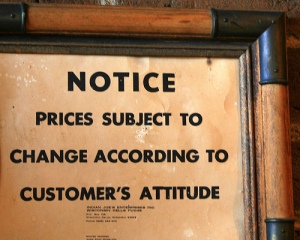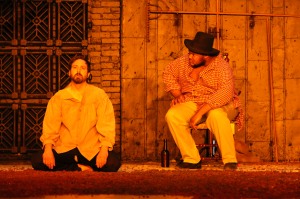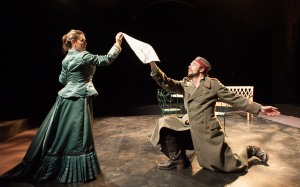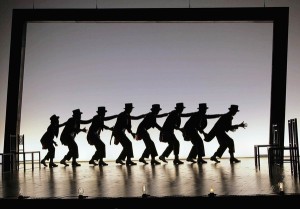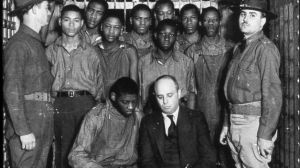
Well, it’s been a while since I posted.
To make up for lost time (but not, necessarily, to promise regular content in the future), I regale you with three short stories about what has developed while I was gone. I think it’s safe to say that the holidays are a bit of a nightmare for everyone. Busy, busy, busy. I went off writing in general for a month and a half. It was good timing, because Art Attack took a hiatus and so, basically, did Philadelphia theater. Not completely true! December is a month of children’s shows and burlesque for Philly. If you’re not into that, then you might as well stay home and spend time with your family. The standout was Pig Iron’s Twelfth Night, which I thought was kind of genius. Made it worth seeing that goddamn play one more time (like, the sixth?).
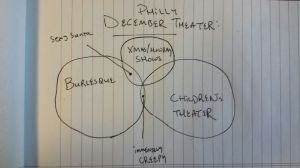
Why children’s shows and burlesque? My theory: children’s shows because they’re lighthearted and the kids are home for the holidays. Burlesque because the rest of us are exhausted, broke, miserable, and don’t want to pay attention to anything longer than ten minutes long. And it’s easier to pay attention when there are garters and nipple tassles. I was working on an article about holiday shows which I thought would go up on Art Attack (got nixed because of the timing of their post-Philly.com-breakup hiatus). The idea was to discover exactly WHY theaters do holiday shows. My real goal was to get at the numbers behind the myth – is it true that theaters make a considerable portion of their budget off of their holiday show? How do they choose holiday shows? Etc. For it, I was interviewing people at a number of venues/companies who were, or weren’t, doing holiday shows. In my favorite (read: least favorite) conversation, the representative of one major venue kept insisting that they don’t do “holiday” shows. And it’s true, their December play, a children’s play, is not “holiday” themed or religiously oriented in any way. I don’t know why he kept insisting on this distinction, though. And he didn’t stop. He kept repeating, “But it really isn’t a holiday show.” They do two children’s shows a year, and one of them is always in December. I apologized for misspeaking, and agreed that of course his play isn’t Christmas themed, or Hannukah themed, or etc. But I suppose because I had used the word “holiday” to begin with, he was unable to converse amicably about it, and kept taking issue with my including their programming in my article at all. There’s a reason why you do a show during the holidays that’s family-friendly, isn’t there? I finally asked. Not really, he concluded, bamboozlingly. The conversation failed to move forward in any productive direction. Me = puzzled. ~~ I’m doing the theater editing for Phindie.com now. In fact, I am The Theater Editor. I’m excited, because I’m excited about Phindie. Check out all of the activity that’s been going on there in the last few days: I reviewed GHOSTS, EL ANO EN QUE NACI, CHEROKEE. Some other very talented people reviewed some other stuff (it’s all linked from the main page. Phindie has a theater calendar, too, now. ~~
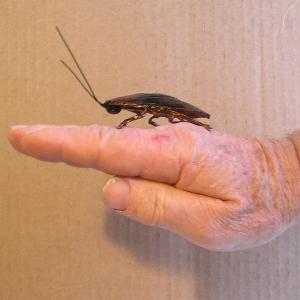 I’m working on a play. I’ve written it, edited it, and submitted it to a director (the ingenious Robert Gross). We had our first rehearsal session a few days ago, and I was like, yep, he’s still a genius. MICROMANIA is about roaches. It’s about people who are obsessed with roaches, and who might harbor, in their deepest insides, some roaches.
I’m working on a play. I’ve written it, edited it, and submitted it to a director (the ingenious Robert Gross). We had our first rehearsal session a few days ago, and I was like, yep, he’s still a genius. MICROMANIA is about roaches. It’s about people who are obsessed with roaches, and who might harbor, in their deepest insides, some roaches.
It is, as Robert told me, about the abject as it operates upon and formulates the self. Or something like that. I’m sure that Ingmar Bergman would agree. I think it’s very good. I’m performing it as a one-man show, which means getting to play a cast of bizarre, deranged characters. The idea is to do it as part of Collage Festival, to which we have submitted the play. We won’t know until February 15. Perhaps if I link to the Collage Festival three times on this blog, it will be more likely to accept me into its 2014 Festival. The Collage Festival, presented in its third iteration this year at the CEC in West Philly, puts a bunch of contributors and artists into one space. The works bleed into one another. Unless you’re in the stage area, which is where I hope to be, and where audiences might be able to hear some sound from outside but otherwise I can torture them with nothing but my own self for forty-five uninterrupted minutes. It’s an adventure, it will be an adventure, and it’s all about roaches. I’m immensely excited.
